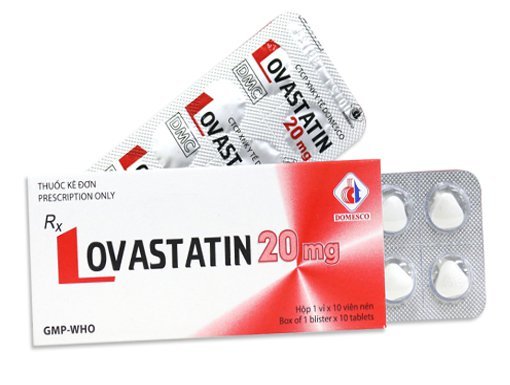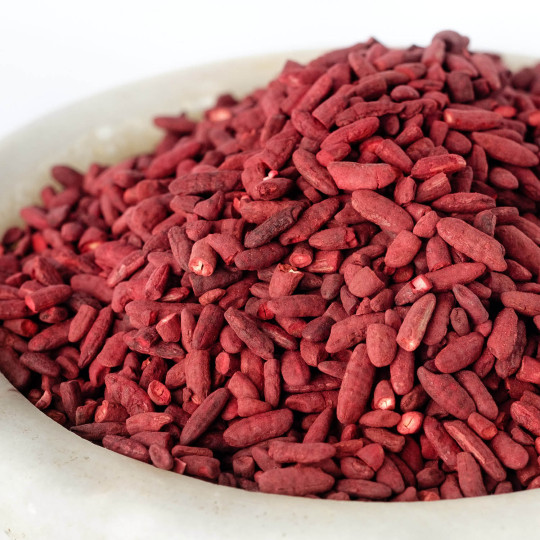#lovastatin
Text
Lovastatin
Names
-- Mevacor
-- Altoprev
Class
-- lipid-lowering agent
-- HMG-CoA reductase inhibitor
Use
-- adjunctive treatment/managing hypercholesterolemia (primary) and mized dyslipidemia
-- primary prevention of coronary heart disease in asymptomatic patients with increased total and LDL cholesterol and decreased HDL cholesterol
Action
-- inhibits HMG-CoA reductase
-- HMG-CoA reductase is an enzyme responsible for catalyzing an early step in the synthesis of cholesterol
#medblr#studyblr#notes#my notes#medical notes#med notes#medblr notes#pharmacology#pharm#pharma#pharmacology notes#pharm notes#pharma notes#lovastatin
3 notes
·
View notes
Text
Dailycompound, Lovastatin


Why does Red Yeast Rice have a lipid-lowering effect? In 1979, Professor Endo Akira of Japan isolated an active chemical "Monacolin K" from Monascus purpureus. Around the same time, Merck Sharp & Dohme, MSD scientists also isolated the compound "Mevinolin" from Aspergillus terreus. The study found that the two teams found the same substance. This HMG-CoA reductase inhibitor has a significant lipid-lowering effect, which is also one of the main active ingredients of monasqu's lipid-lowering effect.
Later, Merck developed the lipid-lowering drug "Lovastatin" and in 1987, it was approved for medical use, the first statin on the market. Lovastatin has few side effects, common side effects include constipation, diarrhea, muscle pain and weakness, etc., but in serious cases, it may cause adverse effects on the musculoskeletal system and liver, and may also lead to birth defects (such as bone malformations, learning disabilities). Pregnant women, breastfeeding women, and patients with liver disease should be cautious about taking monosaccharide health products.

#merck#lovastatin#Red Yeast Rice#red rice#chemblr#organic chemicals#molecule#chemistry#medicine#compound#kingdraw#did u know#japan#side effects
0 notes
Text

Access (Lovastatin) Altocor Online - Affordable Product Delivered Worldwide
Access (Lovastatin) Altocor, Altoprev, Mevacor online with ease. Enjoy the convenience of ordering reasonable products from the comfort of your home. Our online platform confirms swift delivery of quality health products globally. Know-how a seamless process, from browsing our extensive range to doorstep delivery, making healthcare accessible and affordable for everyone, everywhere.
0 notes
Text
MICROBIAL FERMENTATION OF LOVASTATIN AND OTHER BIOACTIVE SECONDARY METABOLITES USING ASPERGILLUS TERREUS
The fungus Aspergillus terreus has dominated the biological production of the “crackerjack” drugs known as statins, particularly lovastatin. The aim of this research was the production of lovastatin which is a known cholesterol-lowering drug, through microbial fermentation using A. terreus. Besides, it also aimed to analyze certain bioactive chemical products and evaluation of such antibacterial and antifungal products, if any produced. Bioactive chemical compounds often referred as secondary metabolites were analyzed using the Gas ChromatographyMass Spectroscopy technique (GC-MS) technique. A. terreus is known to produce a vast variety of important secondary metabolites with high biological activities. The isolation of the natural statins such as lovastatin or mevastatin from A. terreus represents one of the great achievements of industrial Microbiology/Fermentation Technology. Here we report the Aspergillus terreus NBRC (IFO) 31217 (Strain I) and ATCC 11877 (Strain II) produce lovastatin and they also produce important bioactive compounds of high commercial value like isovaline (C5H11NO2), 2-oxo-nvaleric acid and silane etc.
0 notes
Text
Lovastatin Production by Aspergillus terreus (KM017963) in Submerged and Solid State Fermentation: A Comparative Study
Lovastatin (C24H36O5) is a fungal secondary metabolite that inhibits conversion of 3-hydroxy-3- methylglutaryl coenzyme A (HMG CoA) to mevalonate in cholesterol biosynthesis. Lovastatin producing fungus Aspergillus terreus was grown in Solid State Fermentation (SSF) with various agro based wastes and in Submerged Fermentation (SmF) to evaluate the suitable growth medium for maximum production of lovastatin. Eighty three agro based substrates and six different types of SmF media were used for the production. Wheat bran and sprouted wheat were suitable substrates for lovastatin production yielding1.00 mg/G DWS and 1.311 mg/DWS of lovastatin, respectively. None of the SmF medium was found to be suitable for lovastatin production, although all media supported growth of the fungus.
0 notes
Text
The Effects of Lovastatin on Conventional Medical Treatment of Lower Urinary Tract Symptoms with Finasteride
The etiology of benign prostatic hyperplasia (BPH) is still largely unresolved. Multiple partially overlapping and complementary systems (nerve, endocrine, immune, vascular) and local factors are likely to be involved (1), and therefore, several etiologic factors for BPH have been proposed to date (2). Primary interest has been focused on the steroid hormones, especially testosterone estrogen and their metabolites (3). Of the currently used BPH pharmacotherapeutic treatments, only the 5a-reductase inhibitors have been demonstrated to modify the underlying pathology scores and imaging studies (8). The best results have occurred in men with large prostates (> 40 grams), while all the 5a-Reductase Inhibitor’s (5ARI) effect takes approximately 3 to 6 months to occur (9). To our knowledge, of the currently used BPH pharmacotherapeutic interventions only the 5a-RI’s have been shown to modify the underlying pathology.
0 notes
Text
Efficacy and Long-Term Adverse Effect Pattern of Lovastatin
The efficacy of lovastatin, a potent inhibitor of HMO CoA reductase, has been established by numerous studies. At doses of 40 mg administered twice daily, lovastatin produces a mean reduction in total plasma cholesterol of 33%, attributable to a reduction in low-density lipoprotein cholesterol of 41%. The drug also produces a mean increase in high-density lipoprotein cholesterol of 9%, and a reduction in the high- and low-density lipoprotein cholesterol ratio of 44%. The serious reported adverse effects of lovastatin are myopathy (0.5%) and asymptomatic but marked and persistent increases in transaminases (1.9%). Both are reversible when therapy is discontinued. Myopathy has occurred mainly in patients with complicated histories who were receiving concomitant therapy with immunosuppressive drugs, gemfibrozil or niacin.
In an ongoing long-term safety study, 744 patients have received lovastatin for an average duration of 2.5 years up to March 1988. Fifteen patients (2.0%) have been withdrawn because of drug-attributable adverse events: raised transaminases (9), skin rash (2), gastrointestinal symptoms (2), myopathy (1) and insomnia (1). No effect of the drug on the human lens has been observed up to the date mentioned above. Lovastatin has been available in the United States since September 1987. By March 1988, the drug had been prescribed for approximately 250,000 patients. This clinical experience has confirmed the tolerability observed in clinical trials. The good adverse-effect profile of lovastatin is thus now supported both by a substantial body of data in patients treated for over 2 years in clinical trials, and by experience in clinical use with a large number of patients since the drug has been available for prescription.
0 notes